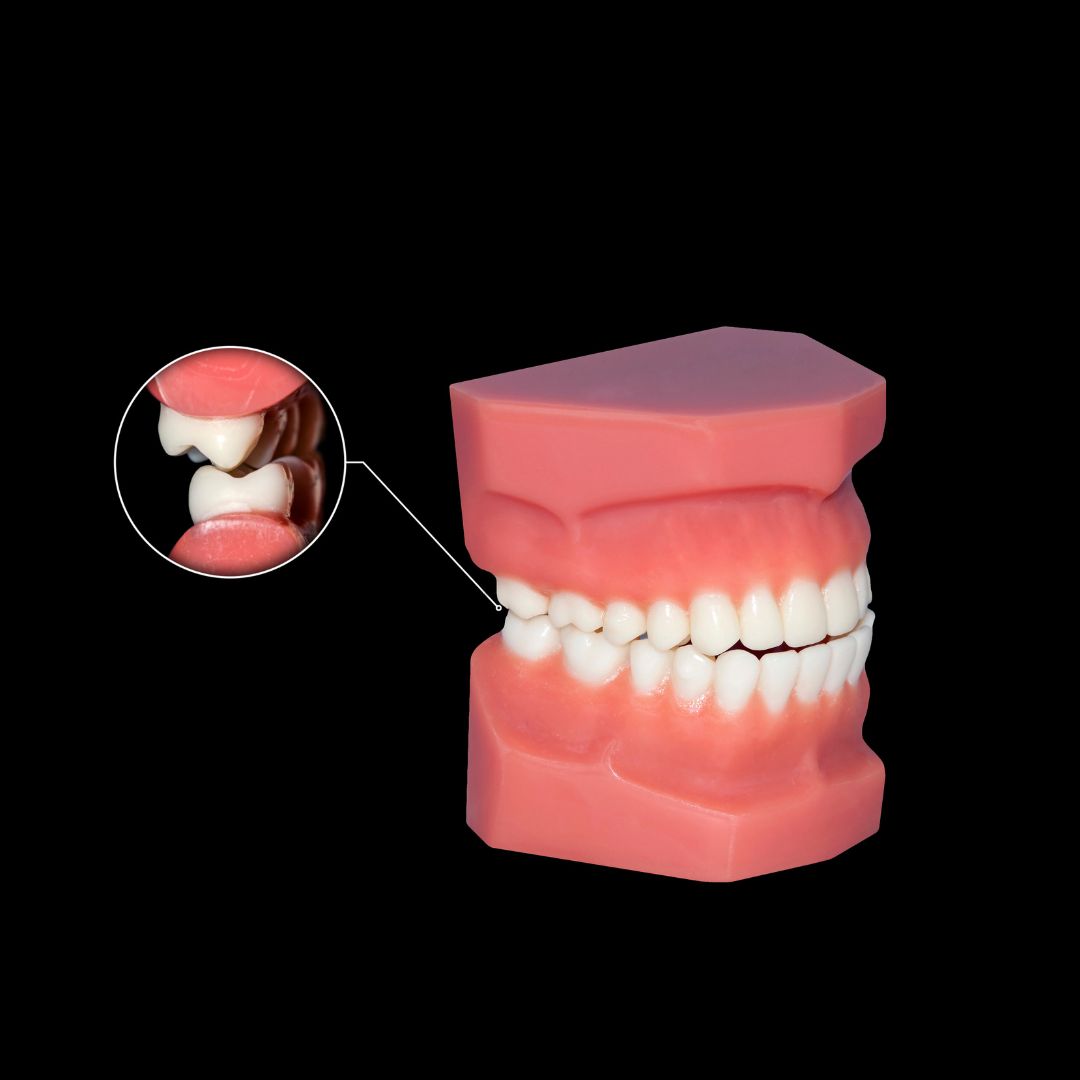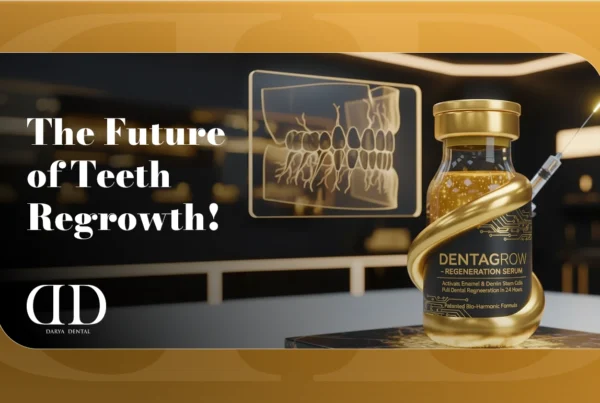
What Are Molar Teeth?
Molar teeth are the large, flat-surfaced teeth located at the back of your mouth, specifically designed for grinding and crushing food. These powerful teeth are essential components of the human digestive system, serving as the primary tools for breaking down food into smaller, more digestible particles before swallowing.
Adults typically have twelve molars in total: three on each side of both the upper and lower jaws. These include the first molars (six-year molars), second molars (twelve-year molars), and third molars (wisdom teeth). The broad, flat surfaces of molars, known as occlusal surfaces, contain multiple cusps and grooves that create an efficient grinding mechanism for processing various types of food.
Anatomy and Structure of Molar Teeth
Crown Structure
The crown of a molar tooth features a complex surface topology designed for maximum efficiency in food processing. The occlusal surface contains four to five cusps separated by deep grooves called fissures. These anatomical features create multiple contact points that effectively crush and grind food particles.
The enamel covering molar crowns is typically thicker than that found on other teeth, providing additional protection against the intense forces generated during chewing. This extra thickness is particularly important given that molars can withstand bite forces of up to 200 pounds per square inch.
Root System
Molars possess the most complex root systems among all human teeth. Upper molars typically have three roots, while lower molars usually have two. This extensive root structure provides exceptional stability and anchoring strength, allowing molars to withstand the significant mechanical stresses involved in the grinding process.
The multiple roots also create a larger surface area for periodontal ligament attachment, further enhancing the tooth’s stability within the alveolar bone.

Primary Functions of Molar Teeth
Mechanical Food Processing
The primary function of molar teeth is mechanical food breakdown through grinding and crushing actions. The flat, broad surfaces work in conjunction with the opposing teeth to create a mortar-and-pestle effect, effectively reducing food particle size and increasing surface area for enzymatic digestion.
This mechanical processing is crucial for proper nutrition absorption, as smaller food particles allow digestive enzymes to work more efficiently in the stomach and small intestine.
Maintaining Facial Structure
Molars play a vital role in maintaining proper facial height and jaw alignment. The vertical dimension of the face is largely determined by the presence and proper positioning of posterior teeth. Loss of molars can lead to facial collapse, creating a sunken appearance and premature aging.
Supporting Jaw Function
These teeth serve as crucial anchor points for proper jaw mechanics. They help maintain correct bite relationships and ensure even distribution of chewing forces across the dental arch. Without adequate molar support, the temporomandibular joints may experience increased stress, potentially leading to TMJ disorders.
Types of Molar Teeth
First Molars (Six-Year Molars)
First molars typically emerge around age six and are often called the “cornerstones of the mouth” due to their critical role in establishing proper bite relationships. These teeth are particularly susceptible to decay due to their early eruption and the deep grooves in their chewing surfaces.
Second Molars (Twelve-Year Molars)
Second molars usually erupt around age twelve and complement the function of first molars. They often have more conservative anatomy with fewer deep grooves, making them somewhat less prone to decay than first molars.
Third Molars (Wisdom Teeth)
Third molars, commonly known as wisdom teeth, typically emerge between ages 17-25. Due to evolutionary changes in jaw size, these teeth often lack sufficient space for proper eruption, leading to impaction and potential complications.
Common Molar Teeth Problems
Dental Caries (Cavities)
Molars are particularly susceptible to dental caries due to their location and complex surface anatomy. The deep pits and fissures on the chewing surfaces can trap food particles and bacteria, creating ideal conditions for acid production and enamel breakdown.
Early detection and treatment of molar cavities are crucial, as the large size of these teeth means that extensive decay can quickly compromise the tooth’s structural integrity.
Periodontal Disease
The posterior location of molars makes them challenging to clean thoroughly, increasing the risk of gingivitis and periodontitis. Advanced periodontal disease around molars can lead to bone loss and eventual tooth loss, significantly impacting chewing function.
Cracked Tooth Syndrome
The intense forces placed on molars during chewing can sometimes result in crack formation. These cracks may be microscopic initially but can propagate over time, potentially leading to pain, sensitivity, and eventual tooth fracture.
Wisdom Tooth Impaction
Third molar impaction occurs when there is insufficient space for these teeth to erupt properly. Impacted wisdom teeth can cause pain, crowding, and increased risk of infection or cyst formation.
Comprehensive Molar Care Guidelines
Daily Oral Hygiene Practices
Proper Brushing Technique
Effective molar cleaning requires specific attention to technique and tool selection. Use a soft-bristled toothbrush with fluoride toothpaste, focusing on the chewing surfaces with small circular motions. Spend extra time on the back teeth, ensuring that the brush reaches all surfaces including the often-neglected areas behind the last molars.
Consider using an electric toothbrush, which can provide more consistent cleaning action and may be more effective at removing plaque from the complex surfaces of molar teeth.
Flossing and Interdental Cleaning
Regular flossing is essential for molar health, as these teeth have large contact areas where food particles and bacteria can accumulate. Use proper flossing technique, gently guiding the floss between teeth and curving it around each tooth surface.
For patients with larger spaces between molars or those who find traditional floss difficult to use, interdental brushes or water flossers can provide effective alternatives for cleaning between teeth.
Professional Preventive Care
Regular Dental Checkups
Professional dental examinations every six months allow for early detection of molar problems. Dentists can identify issues such as early cavities, gum disease, or structural problems before they become more serious and expensive to treat.
For comprehensive dental care and advanced treatment options, consider consulting with experienced professionals who specialize in preserving and restoring molar function.
Professional Cleanings
Professional dental cleanings remove tartar and plaque buildup that cannot be eliminated through home care alone. This is particularly important for molars, where access for cleaning can be challenging.
Fluoride Treatments
Professional fluoride applications can help strengthen molar enamel and provide additional protection against decay. This is especially beneficial for patients at higher risk for cavities or those with deep grooves in their molar teeth.
Dietary Considerations
Foods That Promote Molar Health
A diet rich in calcium and phosphorus supports strong tooth enamel. Include dairy products, leafy greens, nuts, and fish in your diet to provide essential minerals for tooth health. Foods high in vitamin C, such as citrus fruits and berries, support healthy gums.
Crunchy fruits and vegetables like apples and carrots can help clean teeth naturally and stimulate saliva production, which helps neutralize acids produced by bacteria.
Foods to Avoid or Limit
Limit consumption of sugary and acidic foods and beverages, which can contribute to enamel erosion and cavity formation. This includes soft drinks, candy, and processed snacks that tend to stick to tooth surfaces.
Avoid chewing on hard objects like ice, pens, or hard candies, which can crack or chip molar teeth.
Advanced Treatment Options for Molar Problems
Restorative Treatments
Dental Fillings
When cavities develop in molars, prompt treatment with appropriate filling materials is essential. Modern composite resins can provide durable, aesthetic restorations for smaller cavities, while amalgam fillings may be preferred for larger restorations in high-stress areas.
Crowns and Onlays
For extensively damaged molars, crowns or onlays may be necessary to restore proper function and protect the remaining tooth structure. These restorations can provide long-lasting solutions for severely compromised molars.
Endodontic Treatment
Root canal therapy may be necessary when decay or trauma affects the inner pulp of a molar tooth. Given the complex root anatomy of molars, endodontic treatment of these teeth requires specialized expertise and may involve multiple appointments.
Surgical Interventions
Wisdom tooth extraction is one of the most common oral surgery procedures. When third molars are impacted or causing problems for adjacent teeth, surgical removal may be the best treatment option.
Prevention Strategies for Long-Term Molar Health
Dental Sealants
Pit and fissure sealants can provide excellent protection for the chewing surfaces of molars, particularly in children and adolescents. These thin plastic coatings seal the deep grooves where cavities commonly develop, significantly reducing the risk of decay.
Custom Mouthguards
For patients who grind or clench their teeth, custom-fitted night guards can protect molars from excessive wear and potential fracture. This is particularly important for preserving the longevity of molar restorations.
Regular Monitoring
Establishing a relationship with a qualified dental professional ensures consistent monitoring of molar health and early intervention when problems arise. Expert dental care in Turkey provides comprehensive services for maintaining optimal molar health throughout life.
I am text block. Click edit button to change this text. Lorem ipsum dolor sit amet, consectetur adipiscing elit. Ut elit tellus, luctus nec ullamcorper mattis, pulvinar dapibus leo.
The Role of Molars in Overall Health
Digestive Health Connection
Proper molar function is essential for adequate food preparation, which directly impacts digestive efficiency and overall nutrition. Individuals with compromised molar function may experience digestive issues due to inadequate food breakdown.
Systemic Health Implications
Untreated molar infections can potentially contribute to systemic health problems. The mouth serves as a gateway to the body, and infections in molar teeth can potentially affect overall health if left untreated.
Conclusion
Molar teeth serve as the foundation of proper oral function, playing crucial roles in food processing, facial support, and overall oral health. Their complex anatomy and high-stress environment make them particularly susceptible to various problems, emphasizing the importance of proper care and maintenance.
Effective molar care requires a combination of excellent daily oral hygiene, regular professional care, and prompt treatment of any problems that arise. By understanding the importance of these teeth and implementing comprehensive care strategies, individuals can maintain healthy, functional molars throughout their lives.
The investment in proper molar care pays dividends in terms of improved quality of life, better nutrition, and reduced risk of more serious dental problems. Working with qualified dental professionals ensures that your molars receive the specialized care they require to serve you well for decades to come.
FAQs
At what age do molar teeth typically emerge?
First molars usually emerge around age 6 (hence "six-year molars"), second molars around age 12 ("twelve-year molars"), and third molars (wisdom teeth) typically emerge between ages 17-25. The timing can vary significantly between individuals.
Why are molar teeth more prone to cavities than other teeth?
Molars are more susceptible to cavities due to their location at the back of the mouth (making them harder to clean), their complex surface anatomy with deep grooves and pits that trap food and bacteria, and the significant chewing forces they endure that can create microscopic cracks where bacteria can enter.
What should I do if I experience pain in my molar teeth?
Persistent molar pain should be evaluated by a dentist promptly, as it could indicate various problems including cavities, infections, or cracks. In the meantime, avoid very hot or cold foods, take over-the-counter pain relievers as directed, and maintain gentle oral hygiene around the affected area.
How can I better clean my back molar teeth?
Use a soft-bristled toothbrush with fluoride toothpaste, angling the brush to reach all surfaces including behind the last molars. Consider an electric toothbrush for more effective cleaning. Floss daily, and consider using interdental brushes or a water flosser for better access to tight spaces between molars.
What are dental sealants and should I get them on my molars?
Dental sealants are thin plastic coatings applied to the chewing surfaces of molars to seal deep grooves and prevent cavities. They're particularly beneficial for children and adolescents but can also help adults with deep grooves or high cavity risk. They're a cost-effective preventive measure.
Can a cracked molar tooth be saved?
The prognosis for a cracked molar depends on the location, extent, and depth of the crack. Small cracks may be treated with bonding or crowns, while more extensive cracks that extend below the gum line or involve the root may require extraction. Early diagnosis and treatment improve the chances of saving the tooth.
How long do molar fillings typically last?
The lifespan of molar fillings depends on the material used, size of the filling, oral hygiene, and chewing habits. Composite fillings typically last 5-7 years, while amalgam fillings can last 10-15 years or longer. Large fillings may require replacement with crowns for better longevity.
What dietary changes can help protect my molar teeth?
Limit sugary and acidic foods and beverages, especially sticky sweets that cling to teeth. Include calcium-rich foods like dairy products and leafy greens, and crunchy fruits and vegetables that help clean teeth naturally. Drink plenty of water and avoid using teeth as tools to crack nuts or open packages.
Academic References
- Fejerskov, O., & Kidd, E. (2008). Dental Caries: The Disease and Its Clinical Management (2nd ed.). Blackwell Munksgaard. Retrieved from https://onlinelibrary.wiley.com/doi/book/10.1002/9781118618370
- Berkovitz, B. K., Holland, G. R., & Moxham, B. J. (2017). Oral Anatomy, Histology and Embryology (5th ed.). Elsevier Health Sciences. Available at: https://www.elsevier.com/books/oral-anatomy-histology-and-embryology/berkovitz/978-0-7020-6684-1
- American Dental Association. (2021). Molar Teeth and Oral Health Guidelines. Journal of the American Dental Association, 152(4), 267-275. https://jada.ada.org/article/S0002-8177(21)00089-2/fulltext
- Nanci, A. (2017). Ten Cate’s Oral Histology: Development, Structure, and Function (9th ed.). Elsevier. https://www.elsevier.com/books/ten-cates-oral-histology/nanci/978-0-323-48524-1
- Roberson, T. M., Heymann, H. O., & Swift, E. J. (2019). Sturdevant’s Art and Science of Operative Dentistry (7th ed.). Mosby. https://www.elsevier.com/books/sturdevants-art-and-science-of-operative-dentistry/roberson/978-0-323-47833-5
- Selwitz, R. H., Ismail, A. I., & Pitts, N. B. (2007). Dental caries. The Lancet, 369(9555), 51-59. https://www.thelancet.com/journals/lancet/article/PIIS0140-6736(07)60031-2/fulltext
- Petersen, P. E. (2008). World Health Organization global policy for improvement of oral health. International Dental Journal, 58(3), 115-121. https://onlinelibrary.wiley.com/doi/abs/10.1111/j.1875-595X.2008.tb00185.x
- Hupp, J. R., Ellis, E., & Tucker, M. R. (2019). Contemporary Oral and Maxillofacial Surgery (7th ed.). Elsevier. https://www.elsevier.com/books/contemporary-oral-and-maxillofacial-surgery/hupp/978-0-323-55164-5
- Marsh, P. D., & Martin, M. V. (2009). Oral Microbiology (5th ed.). Churchill Livingstone. https://www.elsevier.com/books/oral-microbiology/marsh/978-0-443-10144-0
- Lindhe, J., Lang, N. P., & Karring, T. (2015). Clinical Periodontology and Implant Dentistry (6th ed.). Wiley-Blackwell. https://www.wiley.com/en-us/Clinical+Periodontology+and+Implant+Dentistry%2C+6th+Edition-p-9781118845035






